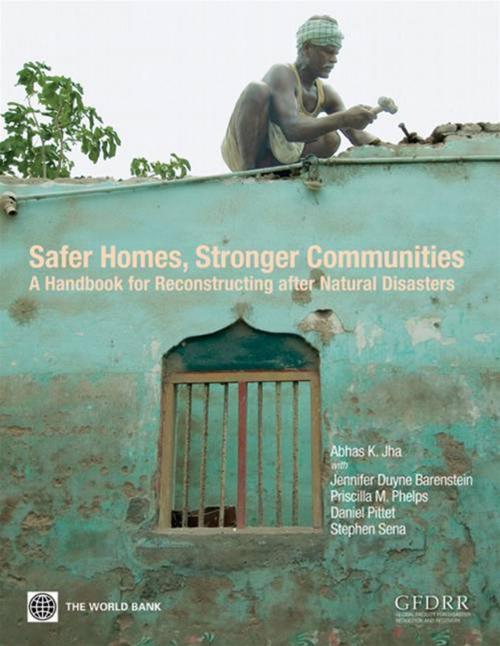Safer Homes, Stronger Communities : A Handbook For Reconstructing After Natural Disasters
Nonfiction, Social & Cultural Studies, Social Science| Author: | Jha Abhas K. | ISBN: | 9780821380451 |
| Publisher: | World Bank | Publication: | January 15, 2010 |
| Imprint: | Language: | English |
| Author: | Jha Abhas K. |
| ISBN: | 9780821380451 |
| Publisher: | World Bank |
| Publication: | January 15, 2010 |
| Imprint: | |
| Language: | English |
Best practices in post-disaster housing and community reconstruction are constantly evolving. Technology is changing how reconstruction is done, as is the frequency and severity of the disasters themselves. Reconstruction projects are increasingly focused on the need to reduce future risks by ensuring that what is rebuilt is safer and more disaster-resilient than what was there before. The expanding role of communities in managing community reconstruction, with financial and technical assistance from government, is another way reconstruction is changing.Safer Homes, Stronger Communities: A Handbook for Reconstructing after Natural Disasters provides advice on how to ensure that reconstruction empowers communities to rebuild, and gives them the support they need to build back in a way that the risk of future disasters is greatly reduced. Written for policy makers and project managers engaged in major housing and community reconstruction programs, the handbook provides guidance on the roles and responsibilities of various actors, and explains what the scope of a reconstruction policy should be and how decisions in each aspect of reconstruction contribute to larger reconstruction goals. For project managers who will be charged with implementing reconstruction policy, the handbook provides guidance on the options that should be considered in each aspect of reconstruction, and examples of where they have been used in other reconstruction projects. It includes more than one hundred short case studies collected from global experts with recent experience in housing reconstruction, that illustrate how the policies and practical ideas have been used on the ground. It also includes links to extensive technical information on the topics covered by the handbook.
Best practices in post-disaster housing and community reconstruction are constantly evolving. Technology is changing how reconstruction is done, as is the frequency and severity of the disasters themselves. Reconstruction projects are increasingly focused on the need to reduce future risks by ensuring that what is rebuilt is safer and more disaster-resilient than what was there before. The expanding role of communities in managing community reconstruction, with financial and technical assistance from government, is another way reconstruction is changing.Safer Homes, Stronger Communities: A Handbook for Reconstructing after Natural Disasters provides advice on how to ensure that reconstruction empowers communities to rebuild, and gives them the support they need to build back in a way that the risk of future disasters is greatly reduced. Written for policy makers and project managers engaged in major housing and community reconstruction programs, the handbook provides guidance on the roles and responsibilities of various actors, and explains what the scope of a reconstruction policy should be and how decisions in each aspect of reconstruction contribute to larger reconstruction goals. For project managers who will be charged with implementing reconstruction policy, the handbook provides guidance on the options that should be considered in each aspect of reconstruction, and examples of where they have been used in other reconstruction projects. It includes more than one hundred short case studies collected from global experts with recent experience in housing reconstruction, that illustrate how the policies and practical ideas have been used on the ground. It also includes links to extensive technical information on the topics covered by the handbook.















